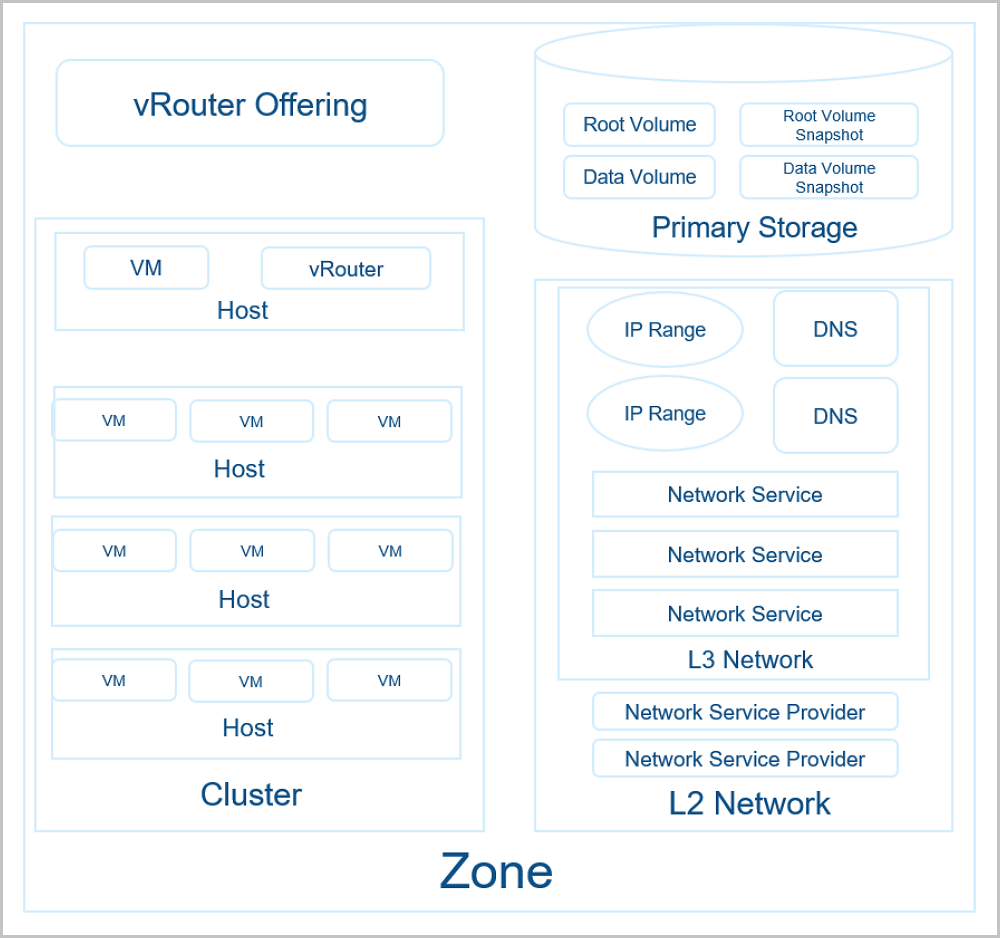Zone
Zone is the largest resource definition in ZStack, including cluster, L2 network, primary storage, and other resources.
- In a data center, a zone corresponds to an equipment room.
- A zone defines a visible boundary. Subresources within the same zone can be visible mutually and can form a certain relationship. However, subresources within different zones are invisible mutually and cannot form mutual relationships.
- Resources in a zone is organized as follows, as shown in Zone Resource
Structure.
Figure 1. Zone Resource Structure 
When you organize a zone, note that:
- Hosts in the same physical layer 2 broadcast domain must be in the same zone. These hosts can be grouped as one or more clusters.
- A physical layer 2 broadcast domain cannot span multiple zones. Instead, it must be mapped as an L2 network in a single zone.
- A primary storage cannot span multiple zones. Instead, it should be mapped as the primary storage in a single zone.
- A data center can have multiple zones.
- A zone can have one or more backup storages attached.
- Resources in a zone, such as a primary storage, can only access the backup storage that is attached to the zone.
- A backup storage can be detached from a zone. After the backup storage is detached, resources in the zone will not see the backup storage any more.
- If a backup storage is no longer accessible to resources of a zone due to network typology changes in a data center, you can detach the backup storage from this zone.
- To better manage the relationship between backup storages and zones, the UI specifies that a backup storage can only be attached to one zone at a time. That is, a backup storage that has been attached to a zone cannot be reattached to the other zone. When you add a backup storage in the UI, the backup storage will be automatically attached to the current zone. When you delete a zone, you will directly delete the backup storage attached to the zone.